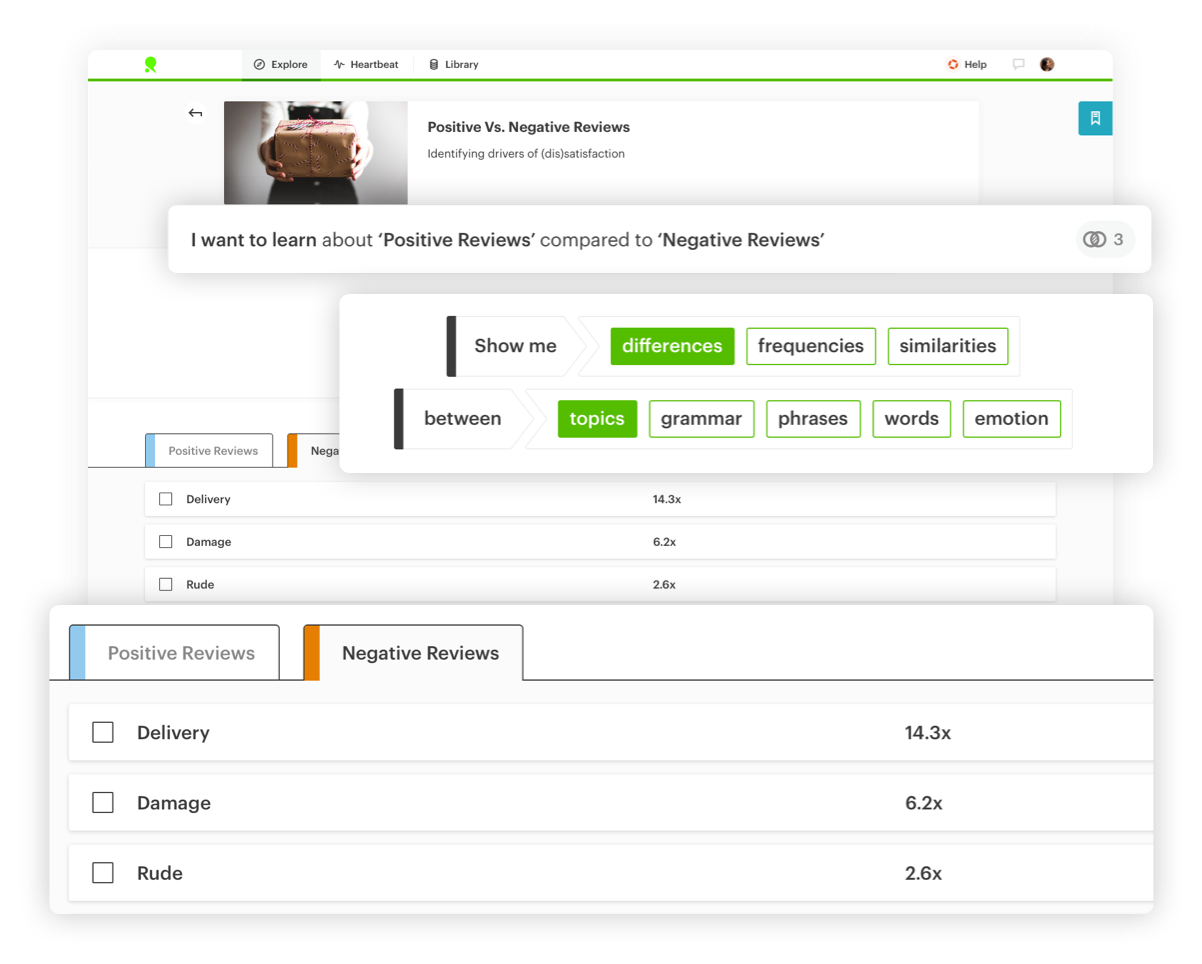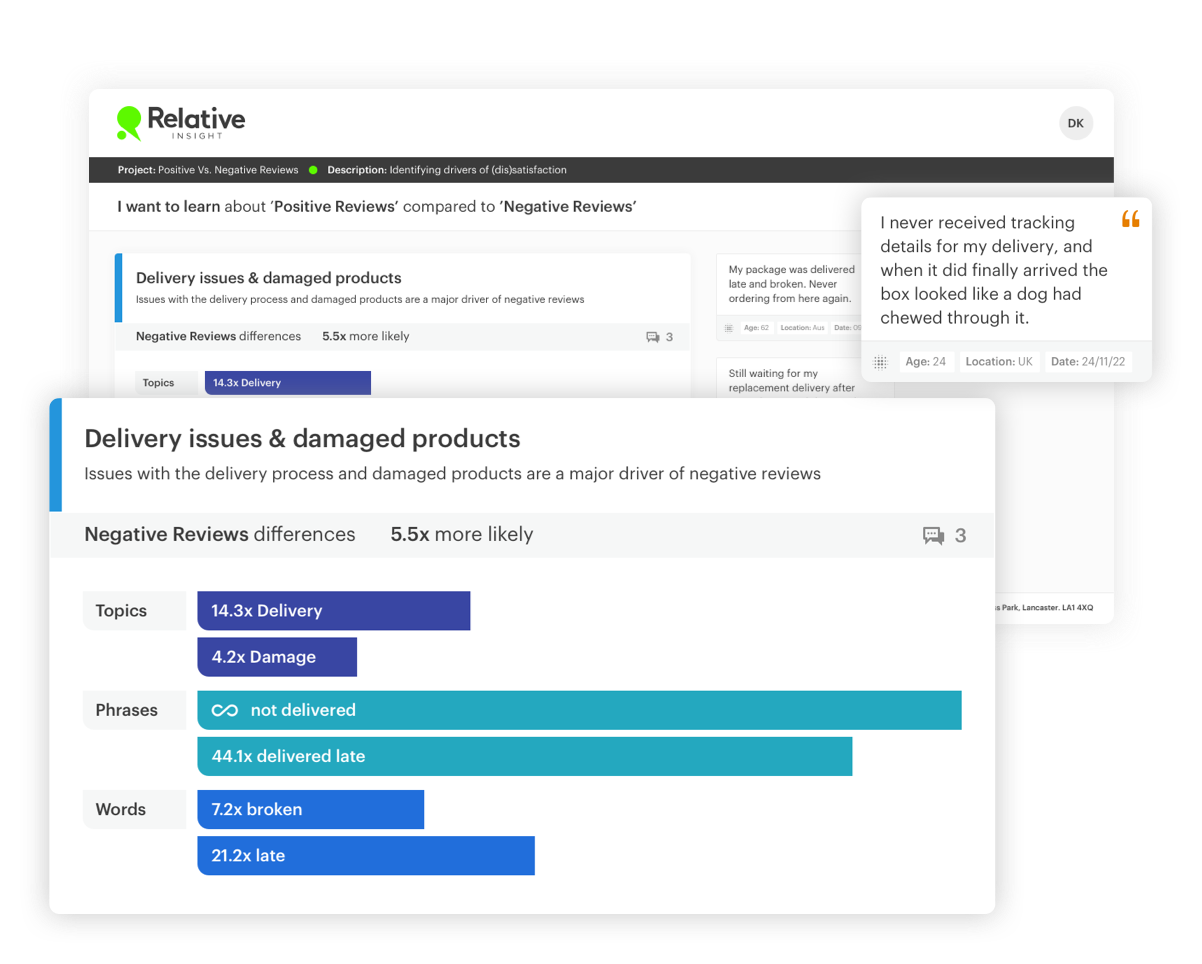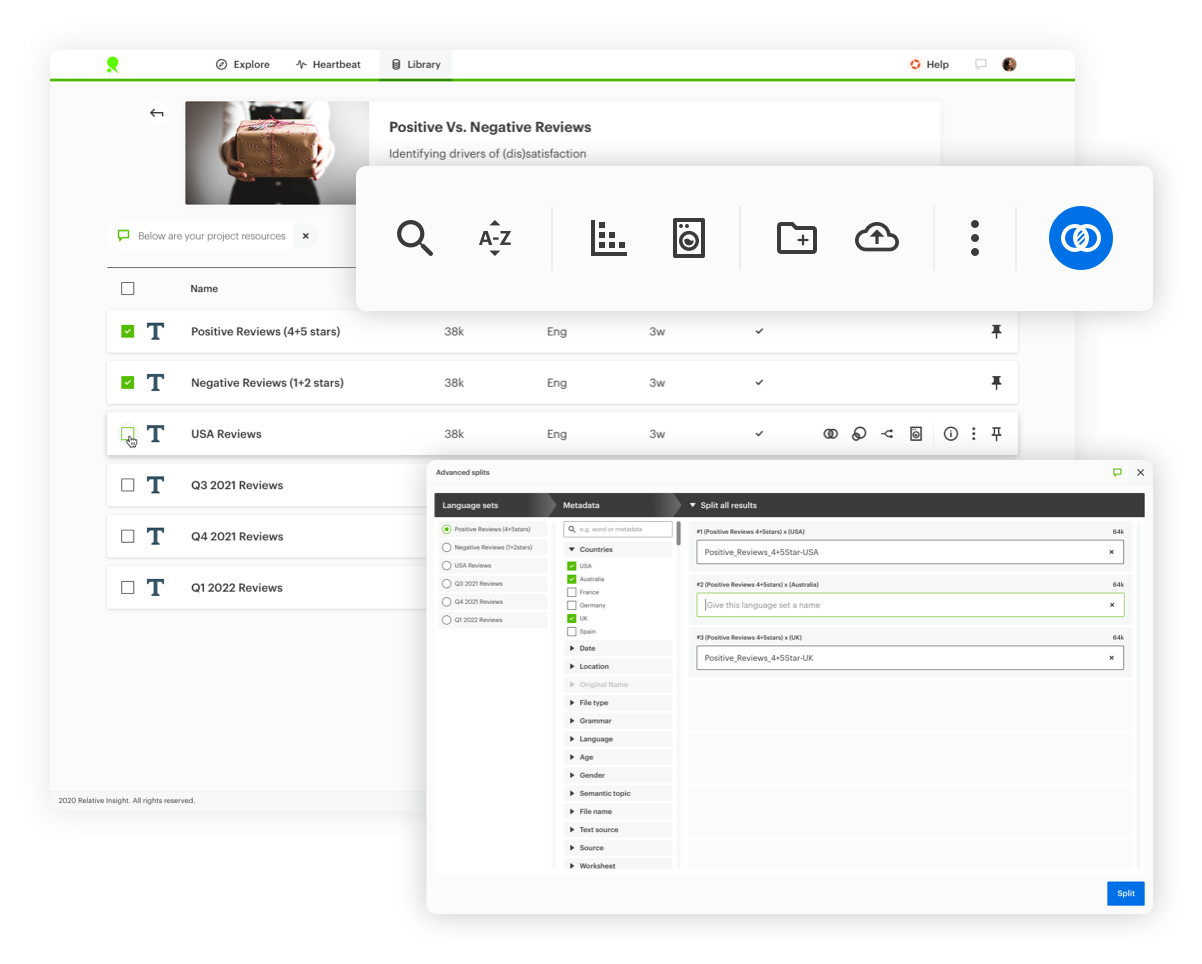Transform survey open-ends into quantified business intelligence in minutes

A scalable solution for analyzing your survey open-ends

Reveal why things are happening

Segment, analyze and compare respondent groups
Survey analysis use cases
CSAT, NPS & CES
Identify the drivers of customer satisfaction
Market research
Stay on top of changes in consumer behavior
Employee engagement
Manage workforce culture and retention
Membership surveys
Understand the value you’re providing members
Survey analysis FAQs
Can I collect survey data in Relative Insight?
No, there are plenty of great survey collection tools out there and we’ll leave that job to the pros. Relative Insight is an AI- and NLP-powered survey analysis platform for generating insights specifically from unstructured, open-ended text.
What can Relative Insight do that Qualtrics or SurveyMonkey can’t?
The embedded analysis tools in survey platforms like Qualtrics and SurveyMonkey are great at providing stats around closed questions, but struggle to produce useful outputs from the words contained in open-end responses. This often results in open-ends being manually coded or neglected entirely. Relative Insight helps insight teams and researchers move beyond subjective anecdotes by quantifying themes and trends in large amounts of unstructured text.